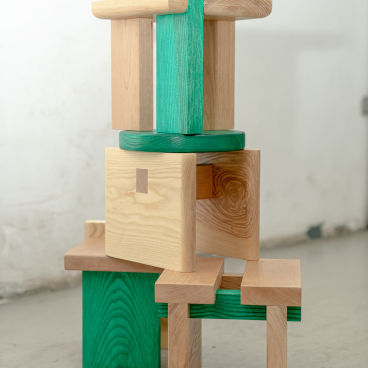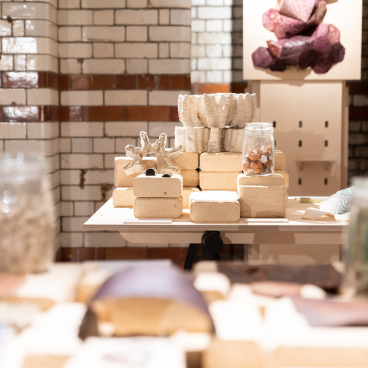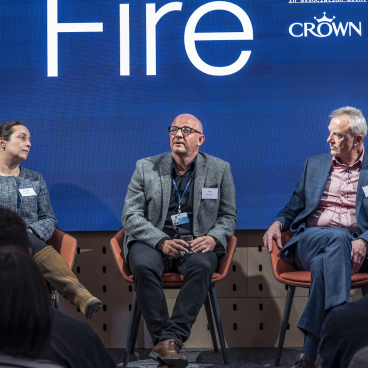Lisa Whited, author, workplace futurist & change management consultant explains the Earth-first workplace.
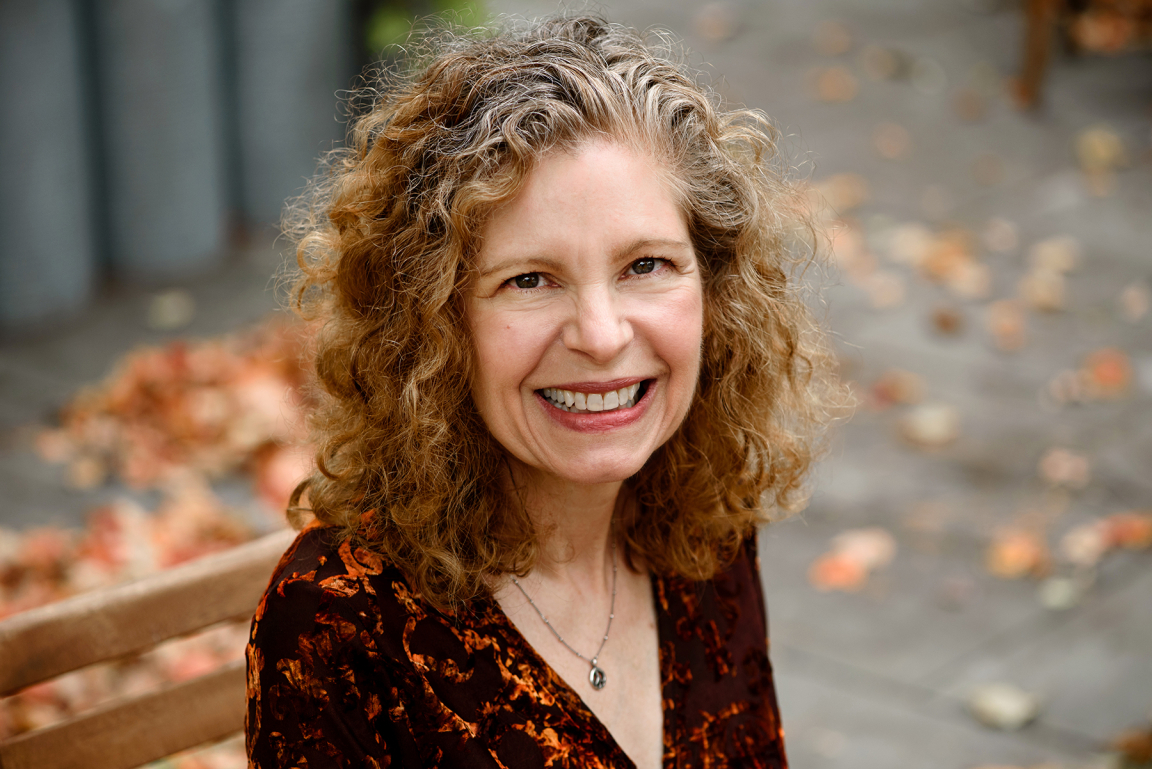
Over the course of our lives, we spend an average of 90,000 hours at work. So it's disheartening to learn that, according to Gallup, 80% of people worldwide are disengaged while there.
Spurred on by this shocking statistic, Lisa Whited - author, workplace futurist and change management consultant, is on a mission to inspire positive change.
Over the course of her career, Lisa has worked to 'respectfully question the status quo' when it comes to workplace. She has guided leaders in providing vision clarification while ensuring all voices are heard in the change process.
Lisa has presented at numerous conferences, served as a keynote presenter, and runs highly-interactive workshops. She is a trained mediator, master facilitator, certified interior designer and has an M.S. in Organisation + Management from Antioch University.
Plus, she has published a book - Work Better. Save The Planet. A must-read for anyone involved in the reshaping of the post pandemic workplace.
Through the power of technology, we caught up with Lisa, who is based in Maine, to discuss some of the key factors impacting the world of work, with practical advice thrown in for good measure.
So, firstly, what was the spark that ignited you to write your debut book?
"Oh gosh. I had been thinking about writing a book for more than seven years. And I'd worked with an awesome guy whose name was Fritz Steele. Early in my profession, I read some of his books and they had a big impact on me. And then I learned he had moved to Maine. So I reached out to him and he was fantastic. He had written at least twelve books, and he mentored me.
"I'd been working with him for a couple of years, trying to figure out what to write. And then unexpectedly, I actually read his obituary in the paper. He died in February of 2020. There and then, I made a vow to get this done. I committed. The thing with change is, if you don't commit, it's not going to happen. The pandemic - what better time to commit to doing something hard?
"I've been working in this field for 36 years + and I have always seen so much waste in the workplace. And there's going to be more waste now. If people are finally acknowledging it's okay to work remotely, then that's going to change what we need for work space.
"I'm also an environmental feminist. So it means I'm passionate about the environment and I am passionate about feminism and equity. And I knew for a long time the world of the workplace has been skewed to one view because it comes from the Industrial Revolution. It comes from a heterosexual white male point of view, because that's the way it's always been done.
"So I looked for what could be improved in how we work, and the Gallup statistic, which is really what drives me in this, even more than the sustainability element, measures people's disengagement with work. It is so huge. 80% to 87% worldwide are not engaged in their work. We live one life. We spend more of it working than virtually anything else. And the fact that so many people are miserable working matters in our society because it has a ripple effect. If you go home or your partner comes home and has had a really rough day, that feeling is going to go to everybody else around him or her. And it reduces how much energy we have to contribute to other causes and other things that need attention versus if you come home engaged and excited. Our world needs more of that positivity."
Out of interest, when was the Gallup statistic recorded? I wonder whether it has gone up or down in light of the pandemic?
"Well, the Gallup poll has been measuring employee engagement for at least 20 years. Global disengagement was 80% in 2021. And throughout the pandemic, engagement improved slightly, hovering between 80% and 87%. Organisations talk about engagement and how do we engage our employees? But what are they doing? Because they're not engaged. Whatever they're doing is not working."
That's interesting, I guess during the pandemic, the increase in homeworking was a really positive thing for a lot of people.
"For a lot of people, it was. And, you know who struggled most? Those that loved being in the office. I refer to it in the book, the number of white men who wanted to go back to the office was the highest demographic. And then the ones that least wanted to go back to the office were black men. And then women of colour and white women are in between the two."
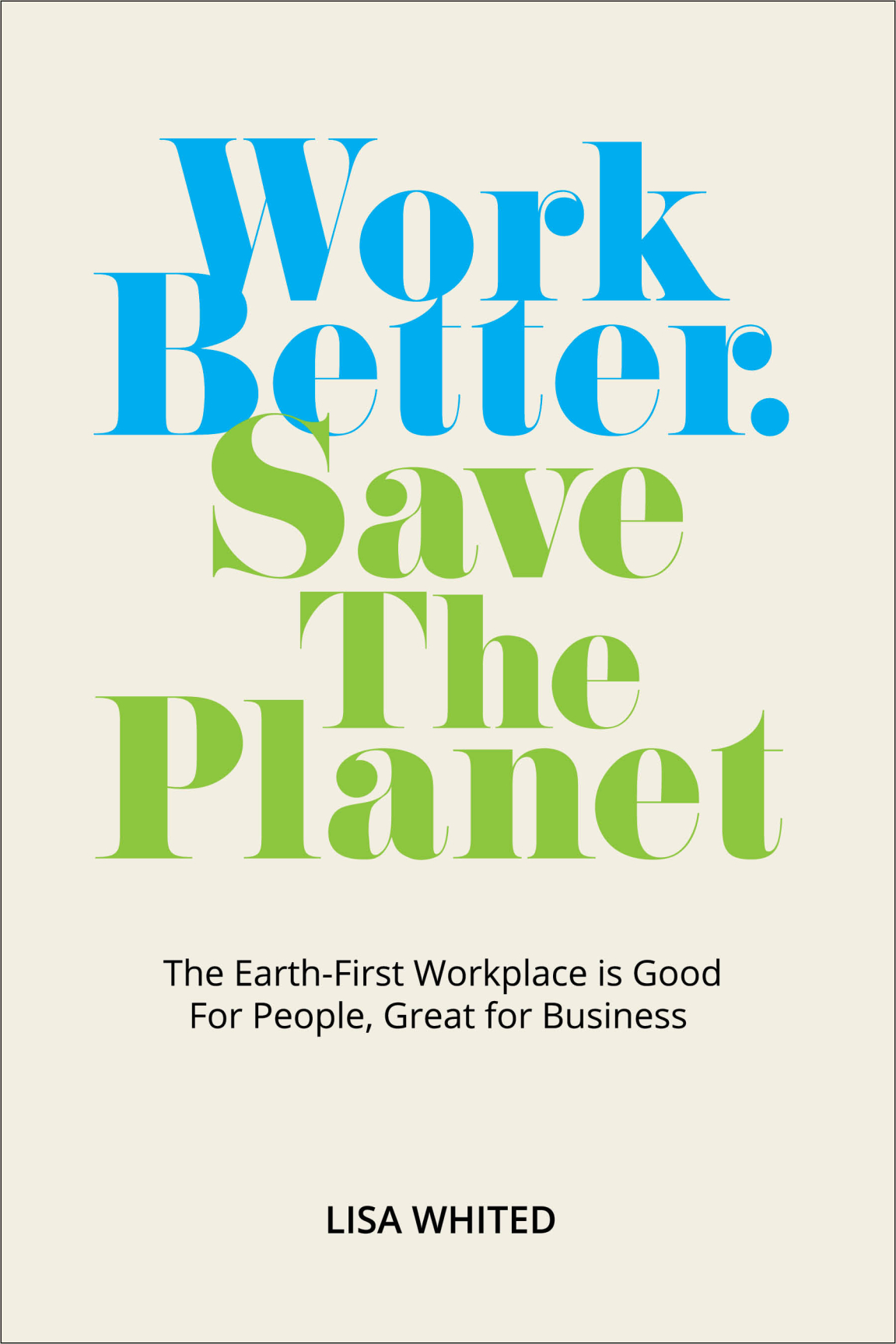
Can you tell us what the Earth first workplace is?
"Many organisations say ‘we put our people first'. Our people are our most important asset, which they are. There's no question your people are your most important asset. But if there's no planet for them to live on, then don't put them first. You’ve got to put the planet first.
“So what I mean by that phrase is that absolutely, build an organisation that cares about your people, but you've got to care about your people while keeping the Earth in mind.
“The Earth first workplace is not necessarily walking into an office and seeing moss on the walls and recycled furniture or second hand goods. It's really zooming out and saying, what can we do differently that will make a positive impact? And one of the decisions you could make is, what do we need the office for? What best serves us in terms of physical space? We have long decided that the size of the space is equivalent to so many square metres or square feet per head. That's been the calculation for as long as I've been in the world of work, which goes back to the 80s. That may have made sense way back, but it certainly doesn't make sense now.
“And so now the question to ask is, what is the purpose of a physical space? And how does it support us in 2022? To be connected, to do good work and to build an engaged organisation. And this is where technology really comes into the equation. You cannot talk about an Earth first workplace without talking about technology. And here's why the space thing matters. 39% of our carbon emissions, globally, come from commercial buildings.
“We know that before the pandemic, office spaces were often empty - 40% to 60% of the time. With private offices, the average emptiness was 77%. So only occupied 23% of the time. And that stat would make sense because a private office is usually for the upper echelon C suite, those usually travelling with clients or off site. So those spaces are sitting empty a lot of the time.
“My Earth first workplace is really questioning what do we need the workplace for? And I'm not saying you don't need a workplace. I think it’s perfectly acceptable to have a space. But what kills me is walking into a workplace where you see a coat on the back of a an empty chair. That's the most expensive coat rack I can imagine. It's a desk with a chair and it's taking up 50 sqft of space, and it is holding a coat."
There's no question your people are your most important asset. But if there's no planet for them to live on, then don't put them first.
How does design play a role in influencing or changing this?
"Space shapes us. And it informs our habits. There’s an opportunity when we think about space. Here's what I like to use as an example. We know in the arc of conversation, if you and I were in real life sitting together, our mouths would not want to be further than 8ft away from each other because beyond 8ft, it’s really hard to hear. It's like we start to yell across the room; we want to be relatively close, but not too close.
“My favourite design for this is four comfortable chairs in an 'x' diagonally across from each other with maybe a low round table in between. If you see a conversation among four people in that type of configuration, it's intimate. They can hear each other. They see each other. They're really connected. There's body language that's visible because there's no place for me to scroll with my phone to not be engaged. When you can provide a lot of spaces like that for people to come and connect, it's a very smart investment.
“Now, the other side of that is if you have a room that's designed for 12 or 14 people, usually a long table, chairs all the way around. Hard to see each other. Right? You're looking down the line of people trying to see what they're saying, and then what can happen is there's only three or four people in there and they're all clustered down at the end of the table. That happens a lot. We know through studying use of meeting rooms that many times those meeting rooms that are eight to 14 people are used by two to four people or even one person. Total waste of space. Really frustrating to people that are walking around trying to find a meeting room because it's being haunted by two or three people. So this is why architecture and design matters so much, because when you can go in with the data and the statistics to share with a client - 'look, we understand your desire to have five meeting rooms that are exceeding 12 people. But let's talk about how you use those spaces.'
“Post pandemic, there'll be a higher acceptance of remote working. That's a big change. And we think when people come back to the office, mostly they're coming back to connect. They want to be able to meet. So, these are the types of questions that we need to be asking to understand what the behaviours will be. And then how does that impact how we design the space? And the other thing about shaping behaviours, how does design play a role in influencing and changing this?”
Do you think then that the pandemic was the catalyst for this changed working landscape, or do you think these things were already in motion before, but just maybe it's been sped up?
“Yes, I think there was a lot in motion. A lot of people have been working for quite a while to try to get organisations to shift to activity based working and agile working. And again, there was so much resistance to remote working. I mean, that's been around for 30 or more years. That's been a thing. But we didn't hear about it. There was so much resistance. The pandemic forced us like nothing else. We'll never see, I cannot imagine, anything else that would impact us globally to change how we work like this. It has changed fundamentally how we work.
“And again, I always say it's a privileged view. So, there are so many jobs that could not go remote. Our front-line jobs, for example. However, I do think if we are smart about artificial intelligence and AI modes of improving aspects of work, there are functions that people are doing in person that also eventually could be remote if they wanted them to be - banking is the one industry that's done that quite a bit with certain functions; they introduced AI to take over functions that were being done by a human. And it didn't mean the human lost their job. What it meant is they were freed up to do even more impactful and higher quality work for themselves. So it did not diminish. If anything, it enhanced that work experience for the individual.”
What are the main challenges that you've found with clients struggling to adapt to change?
“It doesn't matter the industry and it doesn't matter the gender, it doesn't matter the age. What matters is the mindset. If you've got a leader who can just be open to different possibilities and willing to listen and consider other ways, then you're going to have more success with moving to a certain direction. But when you've got somebody who's just hanging on to how things have always been and just stumbling their way forward, you'll have so much resistance. And so that's my challenge.
“My challenge is finding the right leaders that have that open mindset. And when I say leader, also, it's not just the C suite or CEO. It's a leader in any part of the organisation. It could be a leader within facility management, within a huge organisation. It could be an HR leader talking about workforce and ways of working. It could be a maintenance person who really cares about sustainability and brings to her organisation the idea of doing something differently, introducing composting, looking into circular economy practices instead of putting things in the landfill, like suggesting furniture as a service instead of buying new furniture every time we make a change. Those are the types of leaders that we need.”
What's does the future of workplace look like?
“The future of the workplace allows us to have a world that's much more harmonious. And here's what I mean by that. School calendars are based on an agrarian approach. Summer is off because that's when the kids would plough the fields. Our kids have been going to school for the same way for centuries. The school day has been starting often after work begins for a typical job and ending before work finishes.
“When we give people more flexibility where we can, there's a way to be much more inclusive in how we create a future for our children. I think our children are why we care about this planet in the first place. That's where there's responsibility that you start to step into, ‘okay, well, what can I do to make a difference?’ So when I think about the future workplace, I believe - and this ties into the Gallup Poll - when people have choice, they are more engaged and more productive.
"When you give me choice, you give me flexibility, you give me autonomy, the ability to master new information and learn new skills. When I get all those intrinsic human motivators, then I'm going to produce better work for you as an organisation. So it's in an organisations’ best interest to change how they've been doing things, to really question the way things have been in order to create this inclusive, harmonious world."
It's important we design for flexibility and adaptability over time.
The book offers practical advice. What are your top tips for designers working on workplace projects now?
“I think it's important we design for flexibility and adaptability over time as much as we can. Looking for solutions that are not hard built construction that will also help keep things out of landfill. When we design furniture, can we consider if it is dismantled, whether it can be used for something else? And look for the furniture solutions that are easier to divide the space and move the space, demountable wall systems that can be repurposed and reconfigured?
"Ultimately, I think we should be imagining that some of this office space will be housing. Even if you're designing a brand new building, think about the stack of the restrooms. And maybe you don't need big banks of restroom stalls. Maybe you need lots of all-gender restrooms that are stacked that could eventually become apartments with a bathroom on every floor. Because we need housing. We have way too much office space already, and we have so many homeless people. Such a housing shortage. I think of it with the long view. And I know people like to make a statement with design, and I get that. I think it's important. But I also think that there's a way to express ideas that are very powerful in imagery and don't necessarily mean you've got to create a super custom thing that's only good for one purpose.
“I'm a really big believer in the approach of inviting all voices into the conversation. It also helps with the resistance when they know that they're part of the conversation early on. Then it allows for thinking differently, which I think is really important.
“We're careful with the language we use. Again, people will, as soon as you say open plan or agile or unassigned hot desking, have a negative reaction, they've read so much negativity about it. So instead, if you talk about connected, deep work, really talk about the activities that people need to do.
“I just think it's questioning embedded assumptions and pushing back, like when the client says, well, we need a supply room. Well, let's talk about what's going to be in there. You need a supply room because you've always had one, but what's going to be in there?”
Can the perfect workplace exist?
“I am a believer in purpose. What is our purpose? What's the vision? What are you trying to achieve? This is why I care so much about the disengagement statistic - we were all brought to Earth for a purpose. Some don't know for a long time and some are born knowing. But when we are spending so much energy being disengaged with work, that is sapping any energy that could be put towards the goodness that you're here for. And so when I think about it in that way, I think that what we can do to create this perfect workplace is to create a world where people can connect and discover what their purpose is.
“So I don't know if the perfect workplace exists, but I think that there's a lot we can do to give people the space they need to authentically connect and reflect and be their real selves."
To discover more, and to pick up your copy of Work Better: Save The Planet, click here.
If you're interested in hearing more discussion on the future of workplace, sign up to attend our upcoming MSS Presents: Future of the Workplace seminar on 18 May. Click here for more info and to RSVP.



